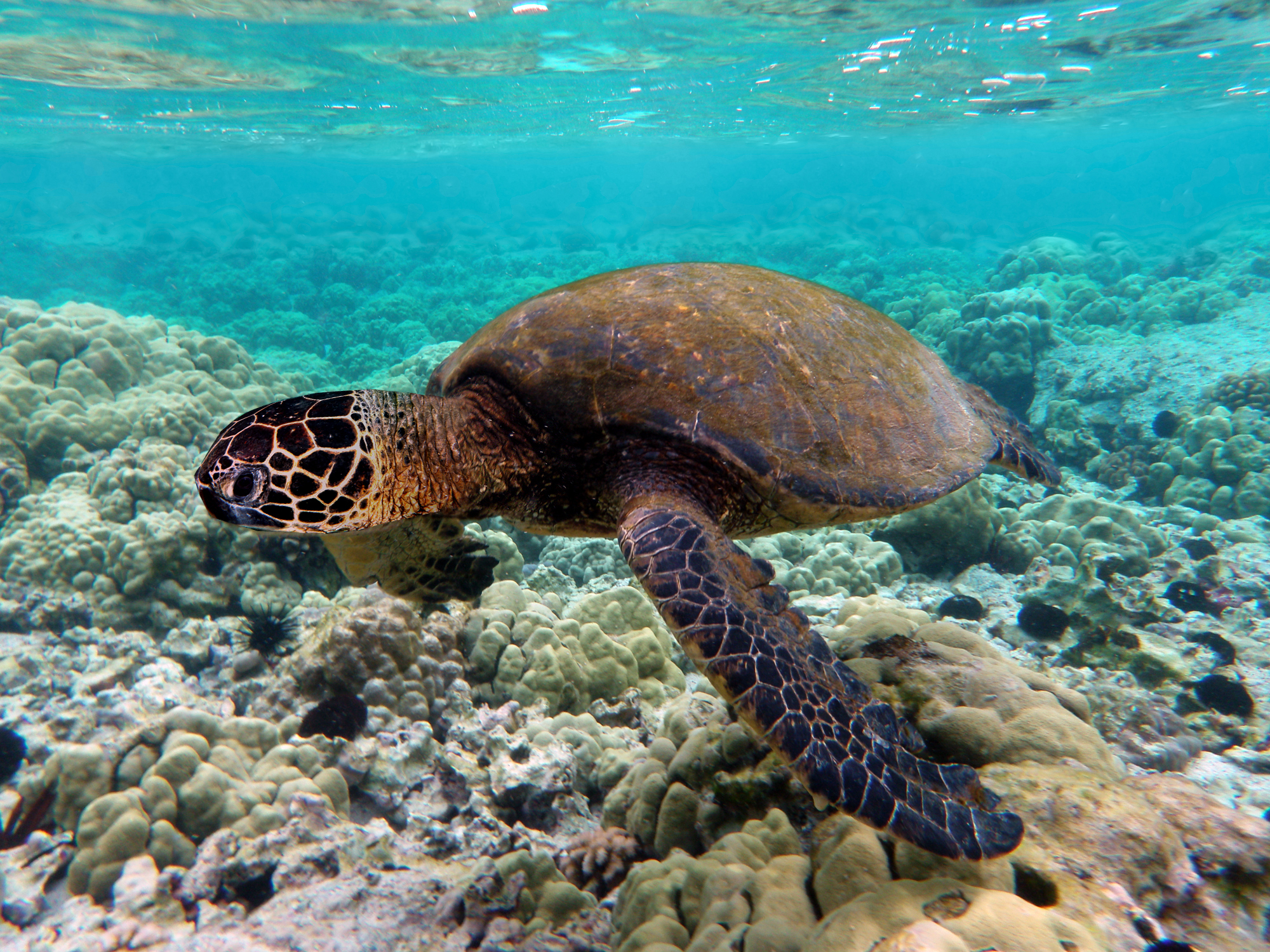
The East Pacific green turtle is distinguished from the green turtle mainly by size, coloration and carapace shape. The carapace of the adult East Pacific green turtle is narrower, more strongly vaulted and more indented over the rear flippers than that of the green turtle (Cornelius 1986; Márquez 1990). The East Pacific green turtle is also conspicuously smaller and lighter than the green turtle. In the rookeries of Michoacán, Mexico, the mean size for nesting females is 82.0 cm in curved carapace length (CCL) (range 60.0-102, n=718) (Alvarado and Figueroa 1990). On the Galapagos Islands, the mean CCL for nesting females is 80.0 cm (range 74.0-100) (Márquez 1990). The mean straight carapace length (SCL) of nesting females at Playa Naranjo, Costa Rica is 82.9 cm (range 73.0-97.0, n=73) (Cornelius 1976). Adult females weigh between 65 - 125 kgs (Cornelius 1986). Adult males in the rookeries of Mexico are smaller than females with an average CCL of 77.0 cm (range 71.0-85.0, n=32) (Figueroa 1989). Mean hatchling length in Michoacán is 4.5 cm in SCL (range 4.2-5.0, n=140) (Zamora 1990).
In adult East Pacific green turtles, the carapace and dorsal surfaces of the head and flippers are olive-green to dark gray or black, while the plastron varies from whitish-grey to bluish or olive-grey. Considerable gray pigment often infuses the plastron. Hatchlings are black to dark grey above and white below with a white border around the dorsal edge of the carapace and flippers. Young juveniles are usually brightly colored with a mottled or radiating carapacial pattern of light and dark brown, reddish brown, olive and yellow (Caldwell 1962).